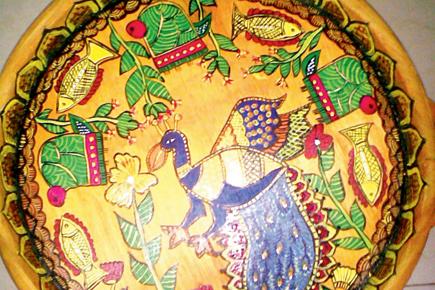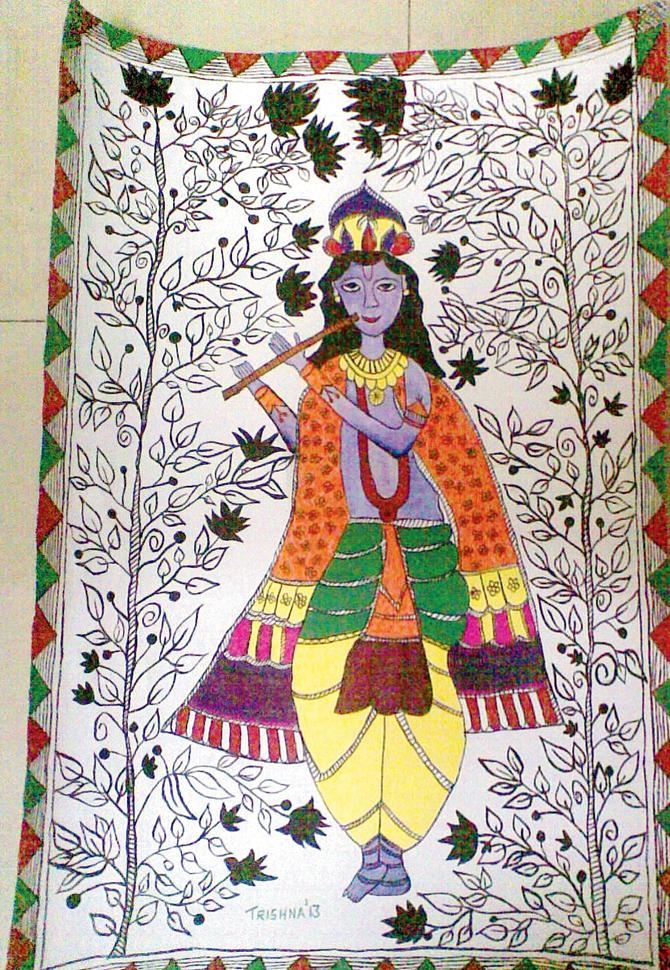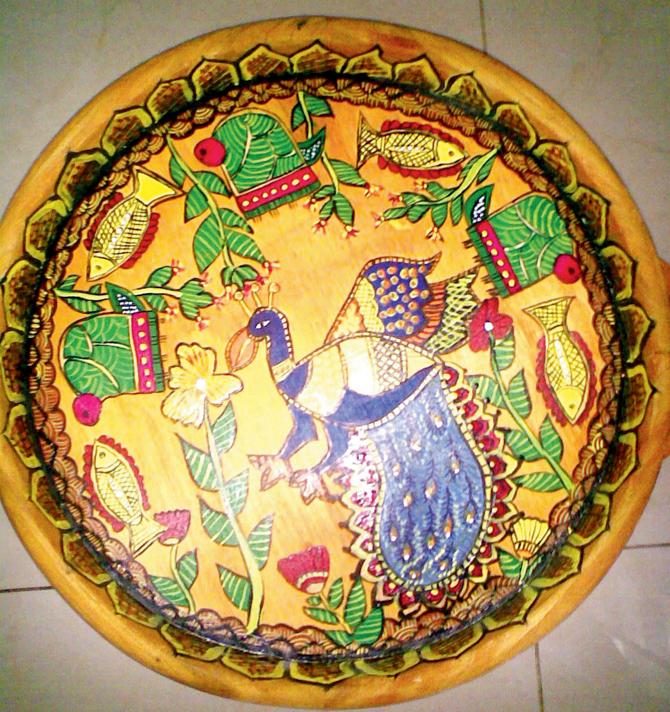As Trishna Patnaik, a city-based self-taught artist gets set to conduct a Madhubani art workshop, this Saturday, here are six cool facts about this traditional Folk art from Bihar

One of the oldest Folk art forms to originate from the Mithila region in Bihar, Madhubani paintings are all about celebrating different occasions, festivals and good fortune. “Traditionally, these paintings are based on mythological, Folk themes and pastoral symbols. The basics in these paintings are geometric and floral patterns as well as animal and bird motifs,” informs self-taught artist, Trishna Patnaik, who will be conducting a four-hour long Madhubani art workshop, this Saturday. Anyone above eight years of age can sign up. the guide shares six fascinating facts about this art form.

A Madhubani painting on cartridge
ADVERTISEMENT
1. The term ‘Madhubani’ comes from the name of the village, Madhubani (which literally means forests of honey). The art form originated at the time of the Ramayana, when King Janak commissioned artists to paint at the time of the marriage of his daughter, Sita, to the Hindu god, Lord Ram.

Madhubani painting on a plate
2. Madhubani paintings mostly depict nature and religious motifs, where its themes revolve around deities like Krishna, Rama, Shiva, Durga, Lakshmi, Saraswati. Natural objects like the sun, the moon and religious plants like Tulsi are also widely painted, along with scenes from the royal court and social events like weddings. These paintings depict occasions and festivals .
3. Traditionally, these paintings were done with fingers or using twigs, brushes, nib-pens, and matchsticks on freshly
plastered mud walls of huts. Now, these are also done on cloth, hand-made paper, wood and canvas.
4. Usually, no space is left empty in this art form; gaps are filled by paintings of flowers, animals, birds and even geometric designs.
5. Different schools of Madhubani paintings have been traditionally classified into three types: Kayastha tradition, Brahmin tradition and Goidana or tattoo tradition. The unique feature of the Kayastha tradition is the use of monochrome colour, while the Brahmin style of painting comprises of a rich variety of colours. Tattoo-based paintings reflect primitive art and create its impact by a serial replication of the same image.
6. Prominent colours include pink, parrot green, red, copper blue, sulphate blue, yellow and dark blue. Double borders and a black outline are compulsory. Earlier, colours were derived from natural sources like plants, charcoal soot, ochre etc. Black colour was obtained by mixing soot with cow dung while yellow colour was made by mixing turmeric, pollen or lime with the milk of banyan leaves. Red colour was derived from the Kusum flower juice or red sandalwood. Meanwhile, leaves of apple trees were used to obtain green colour, rice powder for white colour and palasha flowers were used to get orange colour.
On: May 2, 11 am to 3 pm
At: The Integral Space, 14, Janata Industrial Estate, first floor, SB Marg, Lower Parel.
Call: 9820346338 (for registrations).
Cost: Rs 2,200 per participant (inclusive of material and refreshments)
 Subscribe today by clicking the link and stay updated with the latest news!" Click here!
Subscribe today by clicking the link and stay updated with the latest news!" Click here!







